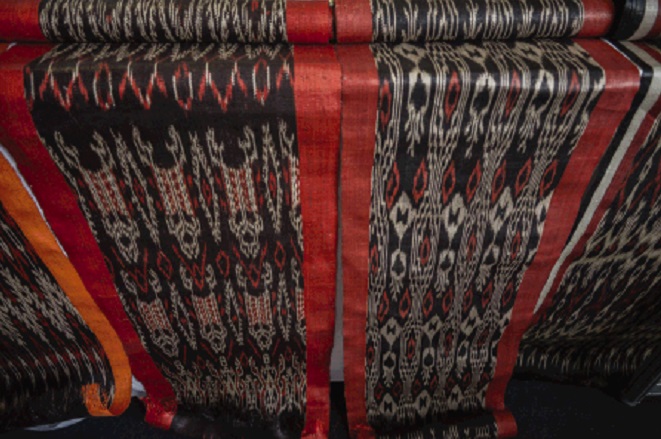Instead of killing the country’s weaving tradition, the entry of global fast-fashion brands seems to have led a growing number of Filipinos and foreigners to seek out handwoven and hand-embroidered clothes and textiles.
If the recent Likhang Habi Market Fair at Glorietta was any indication, there’s a growing market for these beautiful and labor-intensive products made mostly by various indigenous tribes using locally sourced natural materials like cotton, piña and abaca.
Launched in 2009, the three-day annual textile fair provided a venue for traditional weavers and embroiderers from Luzon, Visayas and Mindanao to showcase their products, touch base with old customers and develop new clientele.
It featured, among others, hand-embroidered dresses and blouses from the T’bolis of South Cotabato, piña-silk caftans and cover-ups from Puerto Princesa, inabel blankets, throws, table runners and stuffed toys from the Ilocos region, and embroidered piña barongs from Kalibo.
“Our clientele has been pretty mixed,” said Kat Regalado of Filip+Inna, a local brand, which markets hand-embroidered clothes by a group of T’boli embroiderers. “We even sell our products to the United States. Compared to fast-fashion brands, most of our products take at least three months to finish. But people are willing to wait because they want to wear something unique and comfortable.”
Descendants of the late Lang Dulay, a famed T’boli weaver of T’nalak fabrics from South Cotabato’s Lake Sebu area, also joined the event.
Cultural immersion Likhang Habi doubled as an occasion for cultural immersion, as guests witnessed actual weaving demonstrations on a makeshift stage conducted by professional weavers from various regions.
“This year, we spent a lot of time traveling all over the country telling weavers to use cotton instead of synthetic materials,” said Maribel Ongpin, chair of Habi, the Philippine Textile Council. “People are looking for and willing to pay a higher price for handwoven products using natural materials.”
Ongpin, a member of Friends of the National Museum, answered the call to organize the country’s first-ever traditional textile body during a regional symposium in Manila in 2009.
Months before the symposium, members of the Indonesian textile society came to Manila looking for their Filipino counterparts. Since there was none, they ended up contacting Friends of the National Museum, which ended up hosting the symposium.
“We were the nearest thing the Indonesians could find,” said Ongpin. “While we had a traditional textile heritage and thriving industry like them, we didn’t have a textile society or group to represent our indigenous weavers.”
After the symposium, Ongpin also learned that even smaller countries like Laos and Cambodia and even larger but relatively poorer ones like Myanmar and Vietnam had their respective textile societies. Right there and then, she and her friends decided that it was high time for the Philippines to have one.
“We first went around the country and introduced ourselves for people to get to know us,” she said. “We met a few weavers along the way and we encouraged them to join us.”
As soon as they had enough members, Ongpin and her associates at Habi decided to organize the first Likhang Habi Market Fair later that year. Prompted by the fair’s initial success, the council’s membership grew in succeeding years.
‘Big thing’
Although the annual fair is a “big thing” for weavers, said Ongpin, they don’t have the time to organize one, as these weavers, apart from living in the provinces, also have other jobs to attend to. Some are full time farmers and homemakers who weave on the side.
“As advocates in keeping the textile-weaving tradition alive, we’ve taken it upon ourselves to organize these annual fairs,” she said. “We lease the entire space and then sublease it to them. But we don’t profit from it.”
Apart from giving them a venue to sell their products, the annual fair has given weavers a place to network. It has taught them to price, market and even display their products and to compete.
It has also given consumers, including not a few tourists, easy access to these products. Otherwise, they would have to spend time going to remote areas of the country to buy them.
“If you meet a weaver here and you like her stuff, talk to her directly so you could establish a long-term relationship,” said Ongpin. “And if you see something you like, you better buy it quick. Since many of the items sold here are one-of-a-kind, you might not be able to find them when you come back later.”
Follow the author on Twitter and Instagram @alex_y_vergara









































